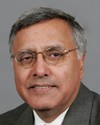Thank you very much.
Mr. Chairman, members of the committee, thank you for giving me the opportunity to testify.
It means a great deal to me to be here both as a concerned member of the human rights community and as a Canadian. Human Rights Watch has been investigating and documenting human rights abuses in Afghanistan since 1984.
I personally have been to Afghanistan twice in the last year, most recently in March. While there, I had the opportunity to meet with members of local human rights groups as well as international bodies. I have also visited the prison known as the Afghan national detention facility, or Block D at Pol-e-Charki prison, as well as the U.S.-run detention facility in Parwan that has replaced the former detention facility at Bagram airfield.
Based on first-hand interviews with former detainees and their family members, as well as on information provided by Afghan non-governmental organizations and other international organizations working on human rights, Human Rights Watch has developed a good understanding of the problem of detainee abuse in Afghanistan. We are particularly concerned about the torture and other ill treatment of detainees by the National Directorate of Security, or the NDS, the Afghan intelligence service that most frequently takes custody of persons captured by NATO forces. Put simply, the transfer of detainees by Canadian Forces to the NDS, even under memoranda of understanding that include diplomatic assurances, violates Canada’s obligations under international law.
NDS torture and ill treatment of detainees in its custody has been well known for years. In 2002, 2003, and 2004, Human Rights Watch issued reports citing concerns about torture and other abuse by Afghan detention authorities. On many occasions we have directly relayed our concerns to the international forces in Afghanistan and their governments. In mid-2006, Sam Zarifi, then deputy Asia director at Human Rights Watch, met with NATO officials, including Canadians, in both Brussels and Kabul and described our concerns about NDS abuse of detainees.
In late 2006, Mr. Zarifi met with the Afghanistan desk at DFAIT here in Ottawa and described our concerns about NDS abuse. In November 2006, Human Rights Watch issued a public letter to the NATO secretary general describing our concerns about NDS abuse. In that letter, Human Rights Watch noted that it knew of at least one instance in which the NDS hid from the Red Cross a detainee who had been handed over by NATO forces.
You are all aware of the credible allegations that detainees handed over by Canadian troops to the NDS in 2007 were mistreated. Detainees transferred by Canadians to Afghan custody reported being beaten, whipped, starved, frozen, choked, and subjected to electric shocks during interrogation by Afghan government officials, including soldiers, police, and NDS officials.
In 2009 the Afghan Independent Human Rights Commission, or AIHRC, published a study on detention facilities that concluded that “torture is a commonplace practice in Afghanistan’s law enforcement institutions”.
Many former detainees held by the NDS will not discuss their treatment for fear of retaliation. Nonetheless, Human Rights Watch has obtained detailed recent information about NDS’s treatment of detainees that makes clear that the problem of torture persists. On December 7, 2009, an Afghan man named Abdul Basir died in an NDS detention facility. The NDS told Basir's family that he had committed suicide by throwing himself out of a window. Photographs obtained by Human Rights Watch show small, dark circles on the deceased man’s forehead, blackened cuts on his back, bruising in several places, and a large cut to his shin. These injuries are consistent with severe physical abuse.
NDS Department 17, the intelligence service’s investigatory branch, had detained Basir for approximately one month prior to his death. Basir's family members reported that they were warned by the NDS not to seek an autopsy if they wanted Basir's father and brother, who were also in NDS detention, to be released.
Human Rights Watch has also obtained written interview memoranda prepared by the Afghanistan Justice Project describing the abuse suffered by NDS detainees. For example, one man described an NDS raid on his home in January 2009 in which his parents were beaten and his home was searched. His brother was taken to NDS detention, where, he claims, he was beaten and tortured for 18 days. He was allegedly beaten with a cable and rifles, subjected to electric shocks, and deprived of sleep. He was then transferred to Department 17, where the torture continued.
I will refer you to my written remarks for a more detailed explanation of recent allegations of abuse in NDS custody.
International law absolutely prohibits torture and other forms of cruel, inhuman, or degrading treatment or punishment. Not only are states prohibited from engaging in torture, they are equally prohibited from transferring someone to the custody of another state to face torture. This fundamental tenet of international law must be the guiding principle in your consideration of Canada's role in the treatment of detainees in Afghanistan. The requirement that states not transfer people to other states to face torture is known as the obligation of non-refoulement. It is found explicitly in certain treaties, such as the Convention Against Torture, and is implicit in other major human rights treaties. It is also a part of the laws of war. Again, I refer you to my written testimony for a more detailed explanation of the relevant international law. I note that Canada is bound by protocol too--the Geneva Conventions--which apply during non-international armed conflicts, such as the current conflict in Afghanistan.
The memoranda of understanding, or MOUs, between the governments of Canada and Afghanistan, which contain so-called diplomatic assurances against torture, do not satisfy Canada's legal obligation of non-refoulement. The current monitoring provided for in the MOUs is inadequate. While we have received anecdotal reports that the conditions of recently transferred detainees have improved, we have been unable to verify these reports. Further, these reports pertain only to specific detainees who have been identified as having been transferred by the Canadian Forces. The nature of the NATO mission, as well as the number of joint Afghan-NATO operations, provide ample opportunity for detainees who have been effectively captured by the Canadian Forces to be formally taken into custody by other NATO allies or by the Afghans. Those detainees who may subsequently be handed over to NDS custody fall outside the terms of the MOUs and are not subject to any form of monitoring or reporting other than the limited monitoring the AIHRC is able to conduct.
Individualized monitoring may place detainees at risk, since they remain in the custody of their torturers. Individualized monitoring may also fail to detect torture. System-wide monitoring alone may also fail to detect the scope of the problem, including the fact that some detainees may be hidden from international monitors. This government is familiar with the brutality of torture from the Maher Arar case. The current MOU regime does not provide a way for the Canadian government to intervene if it believes that a transferred detainee has been tortured.
The path for Canada is clear. Because of compelling evidence that the persons transferred to Afghan custody face a real risk of torture, Canada should immediately cease transferring detainees to Afghan custody.
Human Rights Watch recognizes that barring transfers to the NDS, the effective recipient of most detainees in Afghanistan, does not resolve the question of what to do with persons taken into custody. Indeed, when Canada previously suspended transfers, there were reports of summary executions of alleged insurgents who had been captured by Afghan forces operating jointly with the Canadian Forces. These practices should not reoccur. Canada must at all times adhere to its obligations under international law. Practical difficulties in meeting those obligations never justify violation of the law or complicity in violation by other parties.
NDS facilities are not the only places in Afghanistan where national security detainees are held. The ANDF, or Block D at Pol-e-Charki prison, also holds people captured in counter-insurgency operations. It's operated by the Afghan ministry of defence and offers humane living conditions, including access to health care and regular family visits. These are due, in large part, to the extensive training, supervision, and mentoring provided by the U.S. military. While there remain significant problems concerning due process for detainees held at the ANDF, as of today, Human Rights Watch has not received any reports of mistreatment of detainees. Canada could explore entering into a similar partnering relationship with the ministry of defence or another agency of the Afghan government.
The detention facility run by the U.S. in Parwan, at Bagram air base, represents another possible approach. While Human Rights Watch continues to oppose long-term detention without charge by U.S. forces in Afghanistan, our current concerns relate largely to shortcomings in due process rather than to detainee treatment. The United States is engaged in training and mentoring Afghans to ultimately take over the operation of the detention facility. The target date for handing over the facility to Afghan control is January 2011. Once the facility has transitioned to Afghan control and operates within the Afghan justice system, it may be a reasonable alternative site of detention for persons picked up by the Canadian Forces.
A significant motivation for torture by the NDS and other Afghan justice and detention institutions is the belief that criminal convictions can only be secured through confessions. A study by the AIHRC released in 2009 found that only 21% of law enforcement officers used documents and evidence collection to build a case.
Here again is an opportunity for Canada to actively engage with the Afghans and other nations working on rule of law to build the Afghan government's capacity for detention and trials that comply with international standards.
The torture of detainees handed over by Canadian Forces to Afghan custody is a tragedy. But it also presents an opportunity to help reform Afghanistan’s treatment of prisoners. I do not suggest this will be easy, but it is certainly necessary. The training of Afghan military, police, and intelligence services on proper detention practices will promote the rule of law in a manner that is consistent with Canada’s mission in Afghanistan. It will also provide a real and lasting service to the Afghan people.
Mr. Chairman, members of the committee, I thank you for your time. I would be happy to answer any questions.




